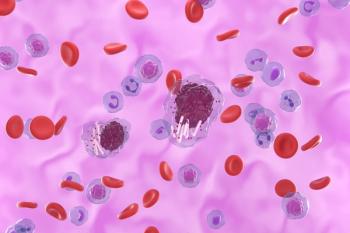
Pharmacists Expand Frontline Role in US Hospitals, Survey Finds
Key Takeaways
- Pharmacists are increasingly integrated into inpatient and outpatient care, managing chronic diseases and delivering clinical services in over 75% of hospitals.
- Workforce shortages, especially of experienced technicians and clinical specialists, hinder further progress in expanding pharmacy practice.
New data show sharp growth in pharmacists’ clinical roles, from the intensive care unit to outpatient chronic disease management, amid staffing and drug shortages.
Pharmacists are taking on a greater role in direct patient care across US hospitals, according to the 2024 American Society of Health-System Pharmacists (ASHP) National Survey of Pharmacy Practice in Hospital Settings.1 The survey revealed a decade-long rise in clinical involvement, with more than 75% of hospitals assigning pharmacists to inpatient units and nearly 72% deploying them in outpatient clinics to manage chronic diseases like diabetes and hypertension.
The survey was published today in the
"Our survey findings reflect the growing recognition of the critical role pharmacy professionals play on health care teams in hospital and health-system settings,” said ASHP CEO Paul W. Abramowitz, PharmD,
The 2024 ASHP National Survey of Pharmacy Practice in Hospital Settings sampling frame included 4926 general and children’s medical-surgical hospitals drawn from the IQVIA hospital database, with specialty, federal, and Veterans Health Administration hospitals excluded.2 Hospitals were stratified by size, and a final sample of 1497 hospitals was selected through random sampling, including all hospitals with 600 or more staffed beds to ensure adequate representation of large institutions. Data collection employed a mixed-mode approach, with email and mail outreach beginning in September 2024, followed by multiple reminders through October 2024.
The survey achieved a response rate of 16.7%. Findings show that pharmacists are delivering clinical pharmacy services to most inpatients in more than 75% of hospitals, and that they are most frequently assigned to general medical-surgical units (73.3%), critical care (68.5%), oncology (56.9%), cardiology (48.5%), infectious disease/antimicrobial stewardship (48.1%), and emergency departments (46.5%).
Additionally, pharmacists have independent prescribing authority in 18.5% of hospitals. Progress toward the ASHP Practice Advancement Initiative (PAI) 2030 goals has been modest, with notable gains primarily in expanding technician responsibilities. However, most measures have remained stable over the past 5 years. Furthermore, the survey found that workforce challenges persist, with over 80% of pharmacy directors reporting shortages of experienced technicians and approximately 60% citing shortages of clinical specialists and coordinators.
“ASHP is actively investing in workforce development to recruit and inspire the next generation of pharmacy professionals,” Abramowitz said in the statement.1 “We believe our efforts to empower pharmacy technicians across all practice settings and showcase the essential role pharmacists play on hospital and health-system care teams will help ensure a strong pipeline of these practitioners for the future.
Overall, the researchers believe the study finds that although hospital pharmacy departments continue to expand their clinical footprint, they still face mounting challenges related to workforce shortages, limiting further progress in advancing pharmacy practice.2
“Clinical pharmacy services continue to expand in both inpatient and outpatient settings,” the researchers wrote. “Progress on PAI 2030 focused initiatives has been inconsistent, with advancement in some areas but regression in others. Addressing pharmacists and technician workforce challenges is critical to maintain progress in pharmacy service expansion.”
References
1. Pharmacists expand clinical footprint across US hospitals. American Society of Health-System Pharmacists. News release. June 25, 2025.
2. Pedersen CA, Naseman RW, Schneider PJ, et al. ASHP National Survey of Pharmacy Practice in Hospital Settings: Clinical Services and Workforce—2024. Am J Health Syst Pharm. Published online June 25, 2025. doi:10.1093/ajhp/zxaf150
Newsletter
Stay ahead of policy, cost, and value—subscribe to AJMC for expert insights at the intersection of clinical care and health economics.









































